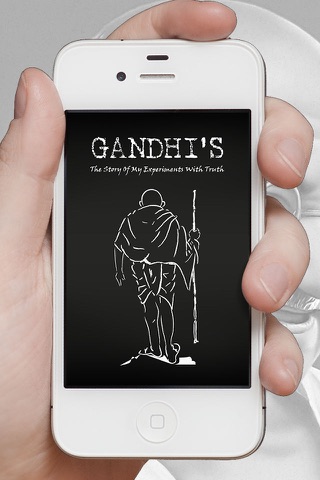
Mahatma Gandhi - The Story of Freedom's Battle
AN AUTOBIOGRAPHY
OR
The story of my experiments with truth
by Mahatma (Mohandas Karamchand) Gandhi
TRANSLATED FROM THE GUJARATI by MAHADEV DESAI
The Story of My Experiments with Truth is the autobiography of Mohandas Karamchand Gandhi, covering his life from early childhood through to 1920. It was initiated at the insistence of Swami Anand and other close co-workers of Gandhi, for him to explain the background of his public campaigns.
"It is not my purpose to attempt a real autobiography. I simply want to tell the story of my numerous experiments with truth, and as my life consists of nothing but those experiments, it is true that the story will take the shape of an autobiography."
The Story of My Experiments with Truth, the autobiography of Mahatma Gandhi, is a very popular and influential book. It covers the period from his birth (1869) to the year 1921, describing his childhood, his school days, his early marriage, his journeys abroad, his legal studies and practise.
In the last chapter, he noted, "My life from this point onward has been so public that there is hardly anything about it that people do not know..."
About Gandhi:
Mohandas Karamchand Gandhi was the pre-eminent political and spiritual leader of India during the Indian independence movement. He was the pioneer of satyagraha—resistance to tyranny through mass civil disobedience, firmly founded upon ahimsa or total non-violence—which led India to independence and has inspired movements for civil rights and freedom across the world. Gandhi is commonly known around the world as Mahatma Gandhi and in India also as Bapu. He is officially honoured in India as the Father of the Nation; his birthday, 2 October, is commemorated there as Gandhi Jayanti, a national holiday, and worldwide as the International Day of Non-Violence.
Gandhi first employed non-violent civil disobedience while an expatriate lawyer in South Africa, during the resident Indian communitys struggle for civil rights. After his return to India in 1915, he organized protests by peasants, farmers, and urban labourers concerning excessive land-tax and discrimination. After assuming leadership of the Indian National Congress in 1921, Gandhi led nationwide campaigns to ease poverty, expand womens rights, build religious and ethnic amity, end untouchability, and increase economic self-reliance. Above all, he aimed to achieve Swaraj or the independence of India from foreign domination. Gandhi famously led his followers in the Non-cooperation movement that protested the British-imposed salt tax with the 400 km (249 mi) Dandi Salt March in 1930. Later he campaigned against the British to Quit India. Gandhi spent a number of years in jail in both South Africa and India.
As a practitioner of ahimsa, he swore to speak the truth and advocated that others do the same. Gandhi lived modestly in a self-sufficient residential community and wore the traditional Indian dhoti and shawl, woven with yarn he had hand spun on a charkha. He ate simple vegetarian food, and also undertook long fasts as a means of both self-purification and social protest. (Source: wikipedia)



